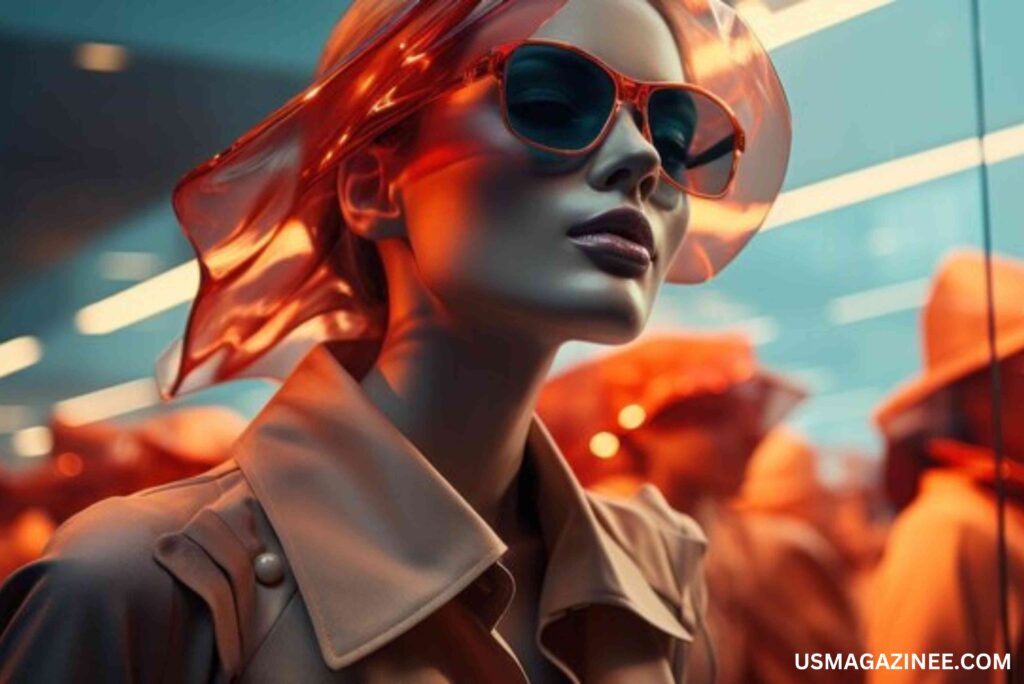Fashion is an art that tells a story without words. It is a language that speaks volumes through colors, fabrics, cuts, and textures. At the heart of this world are fashion designers, the masterminds behind the trends we follow, the clothes we wear, and the identities we express. If you’ve ever wondered what it takes to become a fashion designer or what their role entails, this article is for you.
In this guide, we’ll explore the creative process of a fashion designer, the skills needed, the industry’s evolution, and the impact fashion has on society. Whether you’re interested in pursuing a career in fashion or are simply curious about the industry, this article provides valuable insights into the fascinating world of fashion designers.
Table of Contents
ToggleWhat is a Fashion Designer?
A fashion designer is a person who creates clothing and accessories by combining art, creativity, and functionality. They design everything from casual wear to high couture, bringing their visions to life through sketches, fabric selection, and pattern making. The primary goal of a fashion designer is to create pieces that are not only visually appealing but also comfortable, practical, and aligned with current trends.
What Makes a Good Fashion Designer?
Being a fashion designer isn’t just about knowing how to sew or draw; it’s about understanding aesthetics, fabric properties, and human anatomy. A good designer is also a keen observer of the world around them, absorbing inspiration from nature, history, and modern culture. Most importantly, they possess an innate sense of creativity and a passion for design.
The History of Fashion Design
The world of fashion design has evolved dramatically over the centuries. In ancient civilizations, clothing was often about functionality and social status. However, as the world progressed, fashion became more about self-expression, artistry, and status. The modern-day fashion designer emerged in the 19th century, with figures like Charles Frederick Worth, often considered the first fashion designer in history. Worth revolutionized the fashion industry by designing custom garments for wealthy clients.
How to Become a Fashion Designer
Becoming a fashion designer requires dedication, skill, and a keen eye for detail. While the path to becoming a designer can vary, most successful designers follow these key steps:
- Education: Enroll in a design school to learn the fundamentals of fashion design, such as garment construction, pattern making, and textile science.
- Building a Portfolio: A portfolio is a collection of your best designs that showcases your creative abilities and skills.
- Hands-On Experience: Internships or working in established fashion houses help you understand the industry’s ins and outs.
- Networking: Building relationships with industry professionals, such as fabric suppliers, stylists, and photographers, can open doors for new opportunities.
- Create Your Own Brand: Once you’ve gained enough experience, you can create your own clothing line or work as a freelance designer.
The Role of a Fashion Designer
The role of a fashion designer extends beyond just creating clothing. Designers work on everything from sketching and fabric sourcing to overseeing production and marketing. Let’s break down the various responsibilities:
- Designing and Sketching: Creating initial concepts, designs, and technical drawings.
- Fabric Selection: Choosing materials based on the design’s requirements, like texture, color, and durability.
- Pattern Making: Translating designs into patterns for production.
- Collaboration: Working closely with other professionals like tailors, textile manufacturers, and marketing teams.
- Running a Business: Managing budgets, overseeing production schedules, and even marketing the brand.
The Creative Process of a Fashion Designer
The creative process is at the heart of what a fashion designer does. It’s an ongoing cycle that combines inspiration, experimentation, and refinement. Here’s a simplified version of the creative journey:
- Inspiration: It all begins with inspiration. A designer may find inspiration from nature, art, music, or even everyday life.
- Research and Sketching: Once the idea is clear, the designer starts sketching potential designs, experimenting with different shapes, colors, and fabric textures.
- Fabric Selection and Prototyping: After deciding on a design, the designer selects the appropriate fabrics and creates prototypes of the garment.
- Refinement: The prototype is then tested, and adjustments are made before the final piece is created.

Fashion Design vs. Fashion Styling
While both fashion designers and fashion stylists play crucial roles in the fashion world, their roles are distinct. A fashion designer is responsible for creating clothing and accessories, while a fashion stylist curates and styles outfits, ensuring they look their best on models, celebrities, or clients.
Think of the designer as the artist who creates the canvas, and the stylist as the one who arranges the elements of the painting to make it visually stunning.
Top Fashion Design Schools Around the World
Aspiring designers often choose to study at prestigious fashion schools to sharpen their skills. Some of the most famous fashion design schools include:
- Parsons School of Design (USA)
- Central Saint Martins (UK)
- Royal Academy of Fine Arts (Belgium)
- Fashion Institute of Technology (USA)
These institutions offer degree programs that cover a range of fashion disciplines, including garment construction, fashion history, and business.
The Importance of Fashion Trends
Fashion trends can significantly impact the success of a fashion designer’s collection. Trends reflect the tastes and interests of the public at any given time. Designers need to stay ahead of trends, ensuring their collections align with what’s current. However, not all designers follow trends; some create their own trends, influencing the future of fashion.
Fashion Designers and Sustainability
In today’s world, sustainability is a growing concern in the fashion industry. Fashion designers are increasingly adopting eco-friendly practices, such as using sustainable materials, reducing waste, and focusing on ethical production. Many designers are embracing slow fashion, which emphasizes quality over quantity.
Challenges in the Fashion Industry
Like any creative industry, fashion design comes with its challenges. Some of these include:
- Keeping up with Trends: The fast-paced nature of fashion can make it difficult to stay ahead.
- High Competition: The fashion industry is highly competitive, with thousands of new designers emerging each year.
- Financial Pressure: Fashion houses require significant capital investment to create and produce collections.
Despite these challenges, many designers find great satisfaction in overcoming obstacles and creating impactful work.
The Future of Fashion Design
The future of fashion design is intertwined with technology and innovation. With advancements like 3D printing, artificial intelligence, and virtual fashion shows, the industry is evolving at an astonishing pace. Designers will likely continue to explore new ways to push creative boundaries while embracing sustainability and technology.

How Fashion Designers Influence Pop Culture
Fashion designers don’t just create clothing; they shape pop culture. Designers like Coco Chanel, Giorgio Armani, and Alexander McQueen have not only influenced fashion trends but have also played a part in defining eras. Their collections often reflect societal changes and, in turn, help to shape how we perceive beauty, identity, and culture.
Famous Fashion Designers You Should Know
Some of the most influential fashion designers in history include:
- Coco Chanel: Known for revolutionizing women’s fashion with her elegant, timeless designs.
- Christian Dior: Creator of the iconic “New Look” in the 1940s.
- Gucci: A brand synonymous with luxury, led by Alessandro Michele’s creative vision.
These designers have left a lasting mark on the fashion world.
The Business Side of Fashion Design
While creativity is at the heart of fashion design, the business side is equally important. Designers must navigate marketing, branding, distribution, and financial management to ensure their collections succeed in a competitive market. Many designers build their own brands, taking full control over the business side of things.

FAQs
1. What qualifications do I need to become a fashion designer?
To become a fashion designer, you typically need a degree from a fashion school, along with a strong portfolio showcasing your skills.
2. How long does it take to become a fashion designer?
It typically takes 3-4 years to complete a degree in fashion design, followed by experience through internships or working with established designers.
3. Can I become a fashion designer without going to design school?
Yes, while formal education helps, many successful designers have self-taught skills or learned through apprenticeships.
4. What are some common challenges fashion designers face?
Fashion designers face challenges like financial constraints, high competition, and the pressure to stay ahead of trends.
5. How much do fashion designers earn?
Fashion designer salaries vary based on experience, location, and whether they work independently or for a company. On average, a fashion designer can earn anywhere from $40,000 to $100,000 annually.
Conclusion
Being a fashion designer is more than just a job; it’s a way to express creativity, challenge norms, and leave a legacy. From creating stunning garments to shaping cultural trends, fashion designers have an incredible influence on the world. Whether you’re interested in pursuing a career in fashion or simply appreciate the artistry behind the clothes you wear, it’s clear that the world of fashion design is as dynamic as it is exciting.
MUST RAED: Toyota Cars: The Perfect Blend of Innovation, Reliability, and Style
